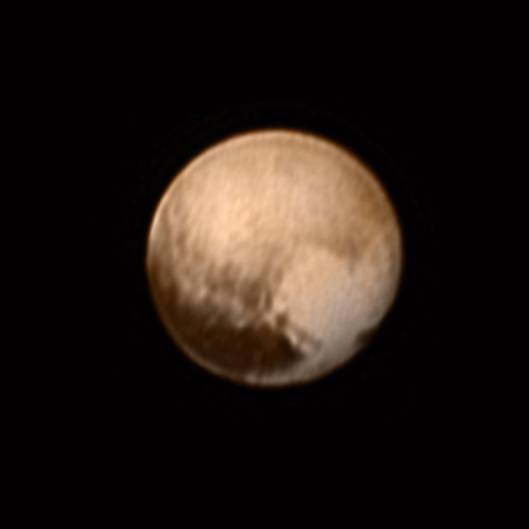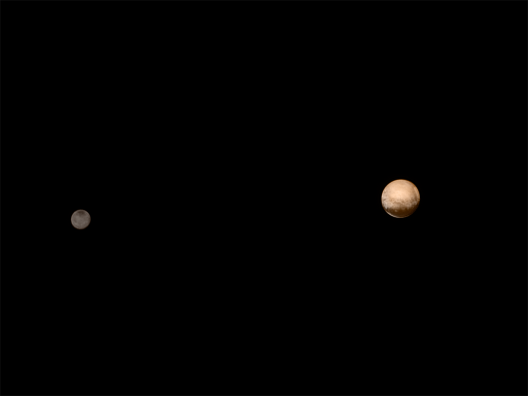Tags

READY FOR A CLOSE UP: Pluto as seen from New Horizons’ Long Range Reconnaissance Imager July 8. (Image by NASA-JHUAPL-SWRI)
In four days, a spacecraft that has journeyed over three BILLION miles into the coldest reaches of our solar system will finally meet its maker.
All eyes will be on NASA’s New Horizons mission Tuesday, July 14, as the craft makes its closest approach to the enigmatic and highly beloved Pluto. (We’ll get a chance to see it all live on NASA TV and the Science Channel. Yah!) This will be the first time we’ll actually see up-close images of the dwarf planet, which has been shrouded in mystery since its discovery in 1930. The best photos we have so far are blurry at best. The picture above was taken Wednesday and it’s the most detailed image we have of the icy world.
“The science team is just drooling over these pictures. If you look at the new pictures now, it’s already five to six times better resolution than what we’ve been able to get before,” New Horizons scientist Hal Weaver told the Guardian.
The mission suffered a bit of a scare last week after an “anomaly” put the spacecraft into safe mode. Apparently the main computer overloaded after it received too many commands. Some science was lost, but only a fraction of all the data collected.
It was minor speed bump, says NASA:
There’s no risk that this kind of anomaly could happen again before flyby, as no similar operations are planned for the remainder of the Pluto encounter.
That’s good to know. It’s been nine years since NASA launched New Horizons, the fastest spacecraft ever to leave Earth. Can you even remember what you were doing in 2006? That’s the year Blu-Ray was released in the U.S., the Nintendo Wii made its debut, and ironically, Pluto was demoted from the “planet” to “dwarf planet” status.
Nine years is a long time to wait. But finally, the time has come. New Horizons has already begun making its flyby observations and with each passing day, we get a chance to know more than we did yesterday. What type of atmosphere does Pluto have? What’s on the surface? What’s up with the mysterious bright spot near the north pole? What’s its temperature? These are just a few of the many questions scientists hope to have solved. But most likely, more questions will be raised than answered. (That’s OK! It’s the best kind of science.)
After reaching its closest point to Pluto Tuesday morning, the spacecraft will gather data about the dwarf planet and its five known moons. Below is Charon, the largest of Pluto’s satellites.

More than 3.5 million miles away, New Horizons snaps this shot of Pluto, at right, and its moon Charon. Credits: NASA-JHUAPL-SWRI
You must check out this teaser for National Geographic’s documentary, “Mission Pluto.” It got me pretty pumped up for Tuesday.

Pingback: New Horizons makes its final approach; highlights Pluto’s striking features | Space oddities